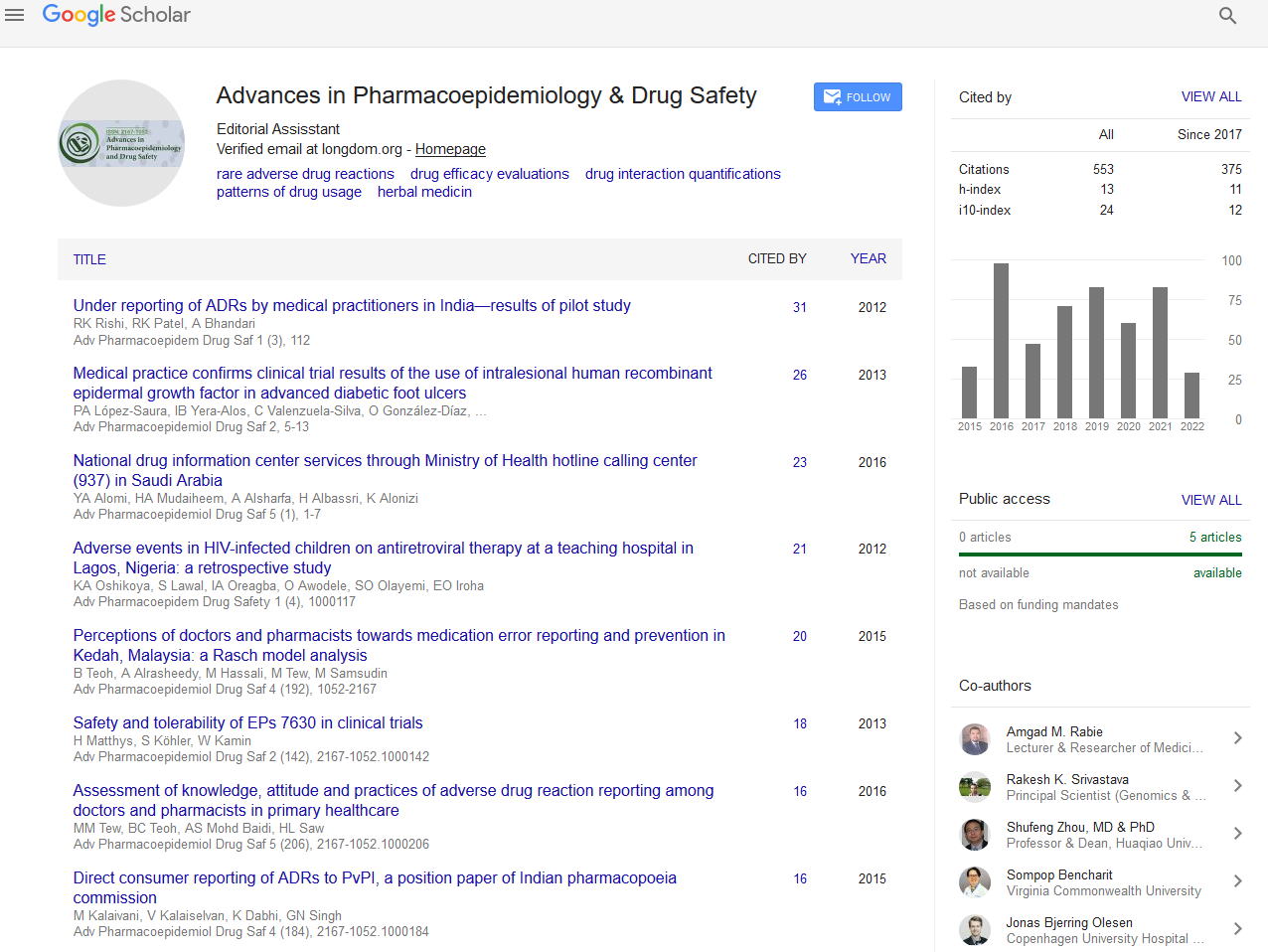Indexed In
- Open J Gate
- Genamics JournalSeek
- Academic Keys
- JournalTOCs
- RefSeek
- Hamdard University
- EBSCO A-Z
- SWB online catalog
- Publons
- Geneva Foundation for Medical Education and Research
- Euro Pub
- Google Scholar
Useful Links
Share This Page
Journal Flyer

Open Access Journals
- Agri and Aquaculture
- Biochemistry
- Bioinformatics & Systems Biology
- Business & Management
- Chemistry
- Clinical Sciences
- Engineering
- Food & Nutrition
- General Science
- Genetics & Molecular Biology
- Immunology & Microbiology
- Medical Sciences
- Neuroscience & Psychology
- Nursing & Health Care
- Pharmaceutical Sciences
Abstract
Challenges of Hepatotoxicity Associated with Isoniazid Preventive Therapy among People Living with HIV in Eritrea
Mulugeta Russom*, Araia Berhane, Merhawi Debesai, Hagos Andom, Dawit Tesfai, Zenawi Zeremariam, Selamawit Gebrehiwet, Nighisty Tesfamichael, Saleh Mohammed Said and Hagos Ahmed
Background
Isoniazid preventive therapy (IPT) is an intervention recommended by the WHO for prophylaxis of Tuberculosis (TB) in people living with HIV (PLWH) and reported as generally safe with little risk of hepatotoxicity. Following its introduction in Eritrea in 2014, IPT related hepatotoxicity and fatality have been frequently reported to the Eritrean Pharmacovigilance Centre. The aim of this study is, therefore, to quantify the risk of hepatotoxicity, evaluate the effectiveness of close laboratory monitoring, assess the causal relationship of IPT and hepatotoxicity, identify possible risk factors and assess preventability of Isoniazid-induced hepatotoxicity in PLWH.
Methods
This was an observational cohort study of PLWH on IPT enrolled from three Antiretroviral therapy (ART) Clinics in Asmara, Eritrea, between August 2016 and February 2017. Causality and preventability of the cases was assessed using Naranjo probability scale and P-method respectively.
Results
Of the 360 eligible patients, 56 were identified with hepatotoxicity with an incidence rate of cases per 1000 person-months with a median time to reaction onset of 34 days. About 41% of the cases developed severe or very severe hepatotoxicity following initiation of IPT. INH was terminated in 78.6% of the cases and reaction abated in 84.1% (37/44) following withdrawal of INH. Besides, ART was discontinued in 42.5% of the cases due to hepatotoxicity. In majority of the cases (87.5%), the causal relationship was found to be ‘probable’ and in 82.1% hepatotoxicity was not preventable.
Conclusion
The incidence rate of INH-related hepatotoxicity is very high with a short time to reaction onset and the occurrence of severe/ very severe hepatotoxicity was unavoidable in substantial number of patients; making risk minimization plan and IPT deployment challenging.
Published Date: 2019-07-05; Received Date: 2019-03-20


